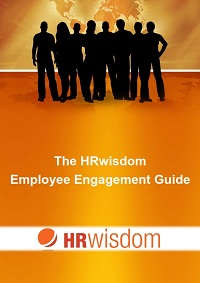The dreaded Nine to Five. The never-ending rat race. The feeling that you’re living the same day over and over again. You’re rinsing and repeating without an end in sight. Weekends are what keep you going. And usually you spend them watching Netflix as a form of catharsis.
Sounds like you? You’re not alone. More than half of Aussies are unhappy with their jobs as are the majority of Americans, which is at an all-time high. Many of us often feel that the only option is counting down to retirement and making the best of the time in between. That’s no way to live. This how-to will show you that changing career when you are stuck in a job is entirely possible, no matter how far along you are.
Assess Your Wants and Needs
Life is about compromises. When you were younger you may have dreamt of working on a boat in the middle of the ocean, without a worry in the world. Unfortunately, responsibilities often get in the way of such carefree pursuits.
Job satisfaction isn’t just about your job. It’s also about how your career fits into your life. Think about what the practical requirements are alongside your ‘wish list’ for your new career. Realistically assess the salary that you’re going to need to cover your basic needs. Think about whether you’re really willing to move to the other side of the country to get that job you’ve always wanted.
Don’t Run Away
Once you realize that you can’t stand another minute of your job, it’s tempting to send in that resignation letter. Granted, the triumphant moment when you hit ‘Send’ is almost worth it. But then the panic seeps in.
“What about rent? I don’t have a plan. What will my partner say?”
Not such a good idea after all. That’s why you should never run from a job, even if you feel like you’re stuck in a rut. Don’t quit your job for your passion on a whim. The reality is that you have bills to pay and it’s always easier to find that ideal job when you have one in the first place and you’re not desperate for a paycheck. Instead, look for those opportunities and once you’ve landed that gig you’ve always dreamed of, resign and celebrate. The key is to be patient.
Invest in Your Education
You don’t have to give up on your career dreams just because you didn’t go through the tradition educational route. If you didn’t go to college or are now a little bit older than the usual entry-level crowd, don’t despair. There are options out there. Investing in your education can lead to a wide range of opportunities.
Our advice is to opt for an accredited course that forms part of a clear path to your chosen career. Free MOOCs are great for exploring your options, but won’t give you the certification you need. Similarly, a general Arts BA is great for some, but you may require further study to get a proper shot at your dream job.
We recommend opting for a degree or diploma that’s geared for a particular vocation. Know the industry or job that you want to go for and see what educational background you need to send in a competitive application. Want to be a building historian? Cambridge University runs a Masters course that includes work experience. Is working with and educating children your long-term dream? Open Colleges offers a diploma that will prepare you for that job and also provides placement opportunities.
Words Don’t Count
“Yeah, this is just a part-time gig. I’m looking for something better.”
“I really want to work in the charity sector, I’m just waiting for the right opportunity.”
People, as most of us know, are often all talk. If you don’t want to spend the next couple of decades convincing yourself that you’re about to quit your job for your dream career, but instead do nothing about it whatsoever, it’s time to put your money where your mouth is.
Treat your search for a new career path as a job in itself. Ask yourself what you need to do to achieve your goal and write it down. Follow the tasks as a to-do list and methodically work through them.
Stop daydreaming and act.




 Gemma Reeves is a seasoned writer who enjoys creating helpful articles and interesting stories. She has worked with several clients across different industries such as advertising, online marketing, technology, healthcare, family matters, and more. She is also an aspiring entrepreneur who is engaged in assisting other aspiring entrepreneurs in finding the best office space for their business.
Gemma Reeves is a seasoned writer who enjoys creating helpful articles and interesting stories. She has worked with several clients across different industries such as advertising, online marketing, technology, healthcare, family matters, and more. She is also an aspiring entrepreneur who is engaged in assisting other aspiring entrepreneurs in finding the best office space for their business. 








